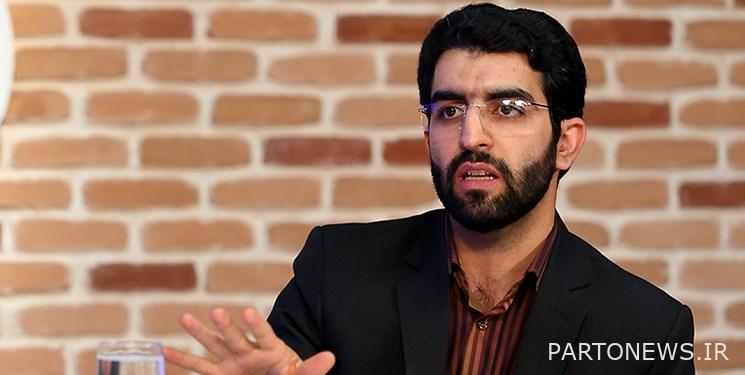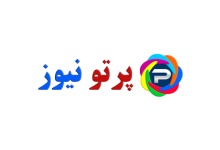Hidden rent | 3 Challenges of Iran’s economy with 4200 Tomans / preferential currency did not curb the growth of prices

According to the economic correspondent of Fars News Agency, one of the reasons given by the government officials in the twelfth government for allocating 4,200 Tomans was the issue of controlling the prices of basic goods. The control of the prices of basic goods has been done in order to support the low-income groups, and the government and experts must answer the question of whether the allocation of 4200 Tomans has been able to achieve its goal or not?
Shahbazi, an Iranian economic researcher, says about the reasons for eliminating the 4,200 Toman currency: The government wanted to provide the basic goods needed by the people, especially the poor, at a cheap price. In this regard, it should be said that, firstly, the allocation of this currency to the goal that the government had, did not hit, that is, price control did not occur. Numerous examples can be given for this subject. For example, we have had an average increase of about 240 to 250 percent in the price of basic goods from April 1997 to September 1400. While the price index has grown less than 200% during this period. In the following, you will read the first part of Fars’ conversation with Musa Shahbazi:
Fars: As the first question, in your opinion, the foreign exchange policy of 4200 Tomans, which has been implemented since 1997, is classified in the form of which foreign exchange policies of governments?
Shahbazi: We have a discussion about foreign exchange policy about 4200 currency, we also have a discussion about allocating currency at a fixed rate such as 4200 Tomans or any other rate. In discussing foreign exchange policy, the point is that our approach to the foreign exchange debate in the Iranian economy was basically incorrect. This problem has been both structural and functional. In general, we have seen the exchange rate debate as very political in recent decades. Over the years, different governments have had an oil revenue. Whenever the situation was right and we were selling oil, we would pour currency into the market and control the exchange rate.
The more we controlled, the better for governments. Because governments have always sought to keep the exchange rate low. In other words, they wanted to say at what rate I received the currency and at what rate I would deliver it to the next government. Now these consequences are whatever they want. It does not matter if the country’s foreign exchange reserves are wasted. It does not matter to governments whether the economy faces inflation for several years and the strength of the domestic currency declines.
In order not to get into trouble in other cases, the country needed to increase the exchange rate and make adjustments, which was basically not considered by any government. During this period, policymakers have not been in a good position with the exchange rate.
It can be said that our central bank did not have a foreign exchange policy at all. The government had oil revenues and it spent these oil revenues as it wished and brought a rate in the budget and dictated the same rate to the central bank, and the central bank was subject to the government’s policies in this regard. So, in an atmosphere where we have to look at the 4,200 Toman currency, our foreign exchange policy and foreign exchange system has many problems and forms. With this introduction, we must enter the discussion of 4200 Tomans.
* The government continues to behave like the children of the rich
Fars: Why did the government decide to adopt such a policy? Did he seek to reduce the exchange rate with this policy or did he want to stand against the increase of prices?
Shahbazi: The foreign exchange policy of 4,200 Tomans has been with the same view, as if the government considers itself the dominant supplier of foreign exchange in the market, so it believes that the rate is determined by it. What was the philosophy of announcing this rate? This is what the government thought was active مایشاء It is in the field of currency and can announce any rate, keep the exchange rate in the same range.
The government is like a rich kid who has been giving money to his father for years, but now there are whispers to stop this way of giving money; But this way of life is the same way that his father gave countless books and walks in the same way. It is unbelievable that oil revenues are now different from the sanctions situation.
Even without sanctions, oil producers and competitors have come to the point where Iran has been virtually pushed aside. In this atmosphere, the government enters and announces a rate, assuming that I am a market-making government and I am a rate-changer, and I say what the exchange rate is; He announced a rate, and his purpose in announcing this rate was that the price of people’s basic goods is very important to us, and we will not allow the price of basic goods to rise, and we will keep the currency at the same rate. Everyone Whatever He wants to take money from us. See the registration of orders and imports at the beginning of 1997.
We have not had such a leap in order registration in the economic history of Iran. Because everyone knew that the exchange rate would rise and the government would bluff and that this would not be possible; So the government easily paid 4,200 tomans for everything that came into the country. To this end, the government came and said that it wanted to pay the currency at the rate I wanted to, in order to ensure that the price of basic goods did not increase. Now that we look at the issue, we see the consequences of the 4200 currency.
* Rents can not be distributed or monitored
Fars: What harm has the policy of allocating 4200 Tomans currency had for the Iranian economy?
Shahbazi: Now we have to list, what has happened to this 4200 currency and what have been the consequences and effects. The first point is the issue of corruption. In other words, the corruption of this method of allocating currency has been the source of rent in the country. We distributed huge rents to importers, and this chain of imports of goods is basically uncontrollable until consumption. That is, we can not afford this oversight, nor can we oversee, nor is it rational to distribute rents and line up the entire system of government to go and control corruption. So the problem is not in the lack of supervision, it is in the distribution of rents.
We say you have left the house open and ten thieves come. You say it should be open at home. The system just has to be such that you can catch the thieves. While you have to close the door to prevent thieves. So this approach, in which our problem is that supply has no supply to supervise, is not logically defensible. Because you distribute the rent.
Go up economically, come down, finally this rent So much It is big, or at least it has grown so big over the years that any monitoring system you put in will become corrupt and rent-seeking. Now you take the cases of reverse smuggling or the case of those who took 4200 Tomans and did not import goods.
Numerous cases and large numbers that the government itself has given currency to and now we have to run and get them back. Those who took the 4,200 currency were for a commodity that was a priority commodity. But they imported another product. Because our customs system is not so advanced and does not have 100% supervision. Our tariff codes also have a problem. One product can easily replace another. Suppose we import sugar. Add salt. It can easily mold this instead of sugar. Both in terms of code similarity and in terms of product shape. So in terms of corruption, you can talk for days.
* By allocating 4200 Tomans, we destroyed the domestic producer
Fars: Apart from corruption and rent distribution, what other damages has this currency allocation system caused to the country’s economy?
Shahbazi: But the main problem is that the currency damage of 4200 Tomans has not stopped corruption. There were several other injuries. So it’s not just corruption that some friends say control it. If the government has no supply, to control its corruption, what is the government for?
It is not just a matter of corruption. Another point that is one of the consequences of the 4200 Toman currency debate is that we are artificially pricing imported goods at a low rate. That is, a commodity that can take half a currency and enter with 25,000 tomans, we say you offer this number for a quarter or a fifth of the price in the market. In this environment, can a domestic producer basically think that I can produce a substitute for that import? Basically not possible; Because the producer counts his costs at a free rate.
Insurance, transportation, raw materials and everything must be purchased at a free exchange rate. The final domestic product is priced at a free exchange rate, and imports are priced at 4,200 tomans. So weakening domestic production and creating a platform for domestic production of livestock inputs, these will basically be completely marginalized and there will be no incentive for domestic production.
* The government has taken over the reserves of the Central Bank to provide 4200 Tomans of currency
Fars: Some experts warn about the growth of the monetary base by continuing to allocate preferential currency. Is there a problem with this allocation method?
Shahbazi: The next point is the discretion it creates in monetary policy. At present, the government does not have enough available currency to allocate imports, and finally, oil exports have decreased, and in previous years, we have eaten and withdrawn from the National Development Fund, and these withdrawals have been high. Recently, there have been approvals that government debts must be returned to the fund. So in this situation, the government has little currency. If we want to continue the same policy, the central bank has to allocate 4,200 of its foreign exchange reserves.
In 1399, the Central Bank has allocated $ 6 billion of its foreign exchange reserves to this policy. It means that I go and buy from the market at a free exchange rate, that is, I buy in the Nimai market at a price of 24,000 Tomans and allocate 4,200 Tomans to imports. So, we have wasted the country’s foreign exchange reserves, which are for the people of the nation and should be used in the best way, for the import of a series of goods. In 1999, we lost at least $ 6 billion in central bank reserves, not government oil revenues. So the disruption of monetary policy is that when I pay 4,200, I am actually accumulating cash for 4,200 tomans per dollar. In a situation where I could sell this currency at the Nima rate and collect 24,000 Tomans and reduce the monetary base.
So in the situation that we are using the reserves of the Central Bank or giving a total of 4,200 Tomans, the monetary base will decrease less, which means that we will reduce the digestion capacity of the monetary base and liquidity with our own hands. In this environment where monetary policy is disrupted, we must also talk about the budget deficit.
The government has no revenue and its revenue has decreased. I either have income that I give 4200 currency or I do not have it. When I do not have it and the prices of basic goods and inputs have gone up and the demand for imports of basic goods has gone up, so I need more currency day by day.
So wherever I have no money, I tell the central bank to give me your currency and make me indebted. So, in practice, the burden of importing basic goods is borne by the government alone; While he can go to Nima and bring the exporter of value and the importer of corn or کنجاله Buy soy from there. The importer takes currency from the exporter and imports and sells it in the market at the market rate. Let the government support the people through other means.
* The growth of the price of goods that have received 4200 Tomans has been more than the average inflation
Fars: The main question here in this regard is whether this currency of 4200 Tomans has hit the target or not? That is, the government to prevent rising commodity prices and support the strata ضغیف Has been allocating this currency, has it been successful in this?
Shahbazi: The government wanted to provide the basic goods needed by the people, especially the poor, at cheap prices. In this regard, it should be said that, firstly, the allocation of this currency to the goal that the government had, did not hit, that is, price control did not occur. Numerous examples can be given for this subject. For example, we have had an average increase of about 240 to 250 percent in the price of basic goods from April 1997 to September 1400.
While the price index has grown less than 200% during this period. Even the goods for which we have paid 4,200 Tomans have increased more than inflation. Of course, this gap may be shorter than the food inflation index; However, compared to the overall index, there has been a greater price increase. I remember in 1998, there was a discussion about removing 4200 currency. At that time, the friends of the Ministry of Jihad said that if you remove it, the price of chicken will be 25,000 Tomans. We said you would reach the same price in another year. It is not that the price increase wants to wait to see if all the inputs come with that price of 4200 Tomans or not.
What percentage of the cost of poultry production is animal feed? Other expenses that are not in the currency of 4200 Tomans. So you can not say at the price of chicken, I give 4200 Tomans for chicken feed, so it should not be expensive. While the farmer and poultry farmer says I can not get 20% of my total needs from the system Marketplace Get the Ministry of Jihad. I have to buy the rest from the open market. I can not close. So not hitting the price target was a predictable event and the government could not control prices.
end of Message/
.

